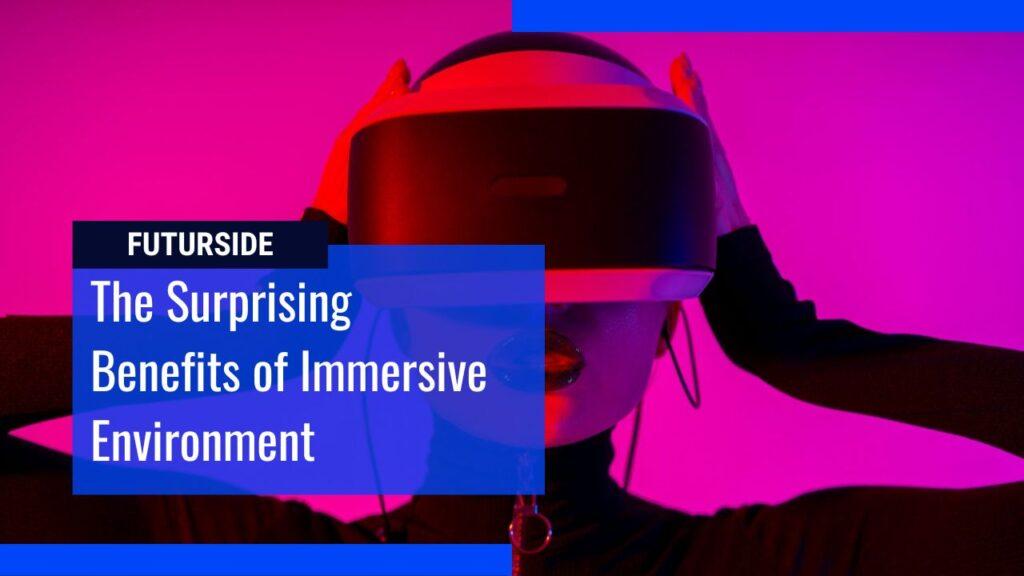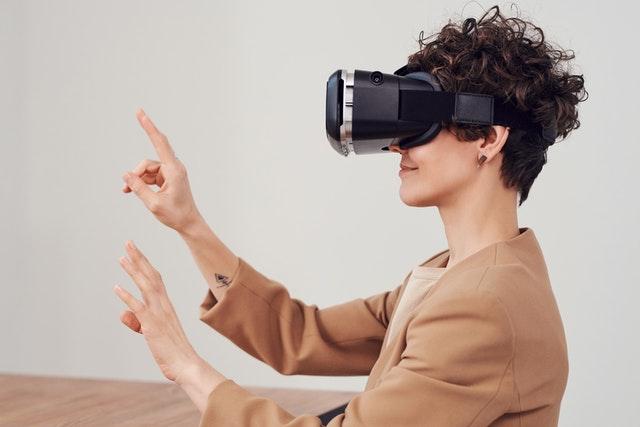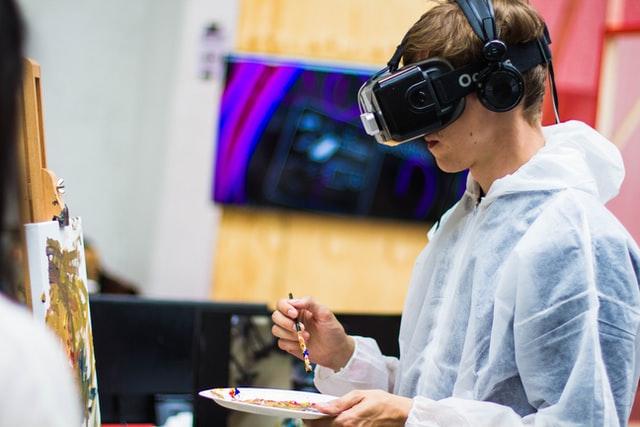Human beings are curious in nature, we are hardwired to find patterns to better predict future outcomes. It is undeniable that the driving force that will shape almost every aspect of the future of civilization is technology. Technology is blurring the lines between the physical and the digital world.
Our reality is changing, because there are technologies that can now blend our physical and virtual worlds together. This technology is called Extended Reality or XR. Most science fiction movies have always portrayed the lives of people living in the future with fancy gadgets and equipment fulfilling all of their needs by commanding.
And now that might well be on the way to becoming a reality. We are all familiar with virtual reality (VR), which enables a fully immersive experience and blocks out the physical world. Then we have augmented reality (AR), which places digital objects on top of the physical world. However you cannot directly interact with these digital objects, it is just for information purposes.
That’s where mixed reality (MR) comes in, which mapped information to specific physical contexts and enables physical and digital objects to coexist and interact in real-time. And the next evolution in human-computer and environment interaction is the extended reality. So what exactly is extended reality?

Contents
What is extended reality?
Extended reality (XR) is a general umbrella term that encompasses many different technologies to create virtual and augmented environments. It is often used to refer to any technology that creates the ability to blend the real and virtual worlds. While virtual and augmented realities are completely different, they are all related to immersive technologies.
The difference is that AR users perceive virtual objects as extensions of the real world while VR users fully immerse themselves in the virtual realm. XR encompasses a conglomeration of virtual reality, augmented reality, and mixed reality. Extended reality provides a fully immersive holographic experience.
XR allows humans to interact with a full-scale digital object. It is also a rapidly growing market, with constant development and innovation. The most popular form of XR uses the real world as the platform for virtual experiences. Virtual elements may include text, images and animations and video streams.
AR is widely accepted and its ease of accessibility is driving its growth. Smartphones and other consumer devices are often integrated with AR solutions. As VR, AR and MR have already entered our life, XR is likely to become more widely accepted in the future. The resulting immersive experience creates a “comprehensive participation effect,” which allows the user to immerse themselves in a different reality.
The term ‘extended reality, first came to public awareness in the 1960s when Charles Wyckoff filed a patent for a silver-halide film that would record events of extreme brightness, such as nuclear explosions. In the years since, the concept has become mainstream as a display upgrade, allowing gamers to immerse themselves in the action and add virtual game characters to the real world.
Currently, video gaming is the most common application of extended reality. Developers are working to improve gaming experiences and bring immersive technology to a wider audience. A company in the gaming industry recently broadcast an eSports tournament on an XR stage.
In addition to allowing the audience to participate in the game, participants could also review the action from within the virtual environment. Moreover, the new technology has the potential to improve live events. In the world of entertainment, this technology can enhance live music or sporting events.
Importance of extended reality
XR technology is exploding and it is not only catching the attention of the public. Augmented and Virtual Reality headsets are becoming increasingly affordable and widespread. Several sectors, including the entertainment and design industry, are exploring the use of this technology. Businesses of all sizes are exploring the opportunities and challenges presented by the technology.

XR technology can benefit businesses. It can be used for remote work, marketing and entertainment. For example, the technology could be used to view a movie or a building in 360 degrees. Similarly, AR and MR can help people experience a new world and interact with it without leaving the comfort of their homes. Ultimately, XR can help businesses make more money and improve their operations.
XR is an emerging technology that simulates the real world. Combined with a blended environment, it can improve corporate training programs. Incorporated into training programs, the technology can enhance learning while creating a multisensory environment for learners. The goal of extended reality is to help employees become more effective and efficient in their jobs.
Extended environments can be used to train employees in a low-risk virtual environment while offering them an unforgettable experience without risking their lives. By combining these technologies, XR is transforming the business world and helping people enjoy new experiences in a new way.
For example, when people are expecting a baby, they can see the nursery in soothing colors before they even close the door. Architects and interior designers can also use XR to show clients multiple options. In real life, such changes would be too costly and time-consuming. But, with XR, you can change your mind instantly and without cost or hassle.
Unlike traditional classrooms, VR and AR technologies can take you to places humans can only dream of. For example, if you were to visit Mars in XR, you would be able to see and experience the entire planet. This kind of experience will also allow students to develop empathy and an understanding of modern issues. XR is a game-changer for education.
It may significantly change the way we live and work. The development of VR and AR is already impacting our world, from games to education. While its impact will be minimal at first, it will likely grow over time, especially as more applications, content and platforms are created.

While XR is still in its infancy, it has the potential to deliver unimaginable illusions and gain wide adoption. The next generation of this technology will have the potential to transform our lives profoundly. Using this technology can increase access to information and improve training tools while making it more convenient for us to work with real objects and experience immersive environments.
Extended reality may help us develop new skills. It will also help us learn to deal with anxiety and improve our performance. The future of virtual and augmented reality has already started affecting our lives. Using VR glasses, we can see and hear virtual objects and environments. The video is 360-degree, with the sound moving along with us.
Benefits of extended reality
XR is already transforming the entertainment and retail industries. The technology allows consumers to virtually experience live shows, exhibitions and even sports events. A museum can even let its visitors virtually experience dinosaurs. Consumers are also increasingly using MR to shop for products online.
With XR, consumers can experience an item and try it on before buying it. Companies like Decor Matters are already leveraging this technology to better understand how their products will look and function. XR is also making its way into classrooms. In fact, the University of Oklahoma has been using VR to have students import their projects into a 3-D system.
This allows students to see how their projects will look like in the real world. This makes it possible to see whether a ceiling is too low or a door is too narrow. In one study, a team of emerging technologies found that VR assignments improved students’ spatial-analysis tasks. The researchers concluded that virtual reality is an effective way to get people excited about learning.
The benefits of extended reality go beyond the obvious. Increasing workers’ understanding of machines and maintenance processes can improve the way workers build and assemble machines and other components. XR can also be used to improve team collaboration, helping users visualize problems and problem-solve in an environment that’s much more realistic than any human being can experience.
Moreover, XR for businesses will save companies money on the costs of training trainers. The use of immersive training environments can improve retention, reduce training time and cut the average time down. The benefits of extended reality for business are many.
XR allows consumers to visualize and interact with a product or service, which is very important in today’s world as online shopping is booming. The technology helps boost brand awareness by allowing consumers to virtually try out products before buying them.
For example, L’Oreal which is a leading cosmetics brand tripled conversion rates after using AR to promote its products and services. This immersive technology engages people more than text, allowing brands to build a deeper connection with their consumers and increase the likelihood of a sale.
Extended technology is a practical tool for businesses of all sizes. It can be used for employee onboarding, training and webinars. Consumers will find it easier to make decisions in an extended realm. Using XR tools to visualize products and services before purchasing can give them confidence about the purchases they’re making. Additionally, this means fewer returns and improved customer service.
The development of XR technology has already surpassed the boundaries of conventional living. It is also quickly becoming a lucrative commercial opportunity for corporations. Ultimately, extended reality solutions are not only useful for business but can enhance work efficiency and reduce errors.
In addition to boosting business productivity, extended reality has the potential to increase brand awareness. And, as a bonus, it can decrease the cost of customer purchases. XR can help eCommerce businesses expand into new markets.
If you’re a business owner, you must take advantage of this technology to stay ahead of the competition. Extended reality has been proven to increase user engagement in eCommerce by offering more information and the ability to visualize a product. This in turn increases sales.
XR improves team collaboration by enabling them to interact with specialists around the world behind the scenes. With multiple people working together on a complex problem, AR smart glasses can provide valuable information overlayed on a device. This saves time and effort when manual solutions to problems arise.
In addition to improving team collaboration, XR improves the quality of life for all, from the individual to society. When it comes to medical practices, extended reality holds promise in helping patients recover from addiction to surgical procedures. Similarly, it can help in the training of construction workers and construction professionals. In the coming years, devices will become more immersive. And immersive devices will become more holographic.

0 Comments